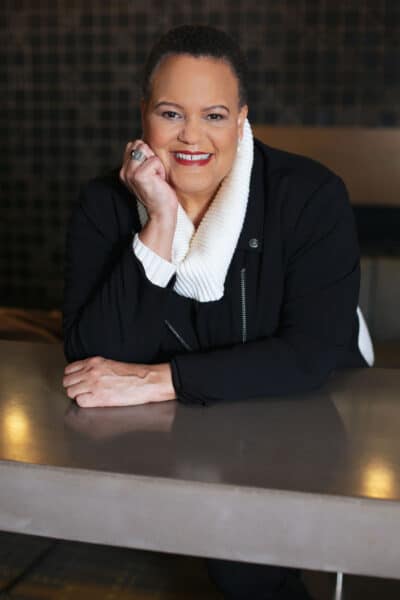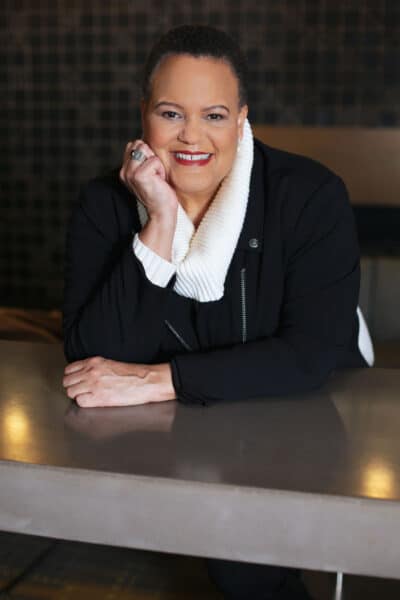In an article published this week by The Atlantic magazine, Adam Serwer writes: “Putting out statements supporting Black Lives Matter or adorning their logos with pride colors is very easy for big corporations, but such gestures do not signal a commitment to fair wages, safe working conditions, or a willingness to pay their share in taxes, let alone racial egalitarianism in all but the most cosmetic sense. They are merely brand management.”
If that’s true, then perhaps it’s as true of marcomms companies as any other. That’s been the experience of Dr. Lauren Tucker, who offers consultancy services to the industry (her Ph.D. is in journalism and mass communications). In a wide-ranging conversation with myself and Carolyn Lyden, director of content at Search Engine Land, Dr. Tucker explained why inclusion management at the operational level comes before raising individual consciousness about diversity. She also drew close connections between inclusion, equity and diversity, and talent management — essential to any agency’s success.
This is the first part of a two part article.
“The mission here is to spread the message. We’re quite evangelistic on our end,” said Dr. Lauren Tucker at the conclusion of a wide-ranging conversation about inclusion, equity and diversity.
She is the founder of Do What Matters, a consultancy dedicated to promoting diversity in the marketing services industry, with a special focus on agencies. But when she talks about diversity, inclusion and equity, she puts inclusion and equity first. “We focus on operations and operational change, so we look to use inclusion-first management as a means of rewiring organizational behavior to make inclusion a default.”

Inclusion is the first priority
“I call it ‘inclusion, equity and diversity.’ Diversity is the outcome of inclusion and equity. IED: Tucker admits it sounds like a bomb. “A lot of folks feel that inclusion efforts are really only about minorities. Or they’re only about women. But that’s not true. What we’re finding is a lot of the opportunity hoarding that is happening in agencies is because of nepotism or because of cronyism.”
A lot of people, including white males, feel treated like second class citizens, especially at creative agencies. “Inclusion management is really about a rising tide that lifts all boats, making sure that everybody feels that they are contributing to the mission of the company.” This is especially important, said Tucker, for small agencies where the talent portfolio needs constantly to be enriched and nurtured.
Read next: The onus of diversity should not fall on Black marketers
Don’t mistake intention for completion
The background to the Do What Matters mission, of course, is a recent history of businesses feeling compelled to take stances on racial injustice and workplace diversity. But a recent report from Hue, a nonprofit built to amplify voices of color and support career paths in marketing, indicates deep structural problems which are unlikely to be resolved by expressions of solidarity and intent.
“Unsafe. Unheard. Unvalued: A State of Inequity” is based on a survey of over 2,000 professionals in marketing, marketing services, communications and other functions. The report highlights widespread awareness of inequity and a desire to see it remedied. But in practice, 75-80% of respondents reported that their companies did not invest in diverse recruitment practices, had not instituted racial awareness training, and had failed to make meaningful progress on building a more equitable environment for employees of color.
Some businesses, said Tucker, are looking to make big changes: “Especially those who are recognizing that there are activist employees and activist customers out there. But they tend to mistake intent for completion and impact. They assume that somehow, by getting buy-in to a new initiative, this will naturally produce change across the organization. We saw a lot of intent, and a lot of furious action; they actually will hire a Chief Diversity Officer, will get Employee Resource Groups to do some research, etc.”
This tends to put the focus on BIPOC employees, on women, or people with disabilities. “I use the metaphor of the canary in the coalmine,” she says. “It’s about, hey, what can we do to get more canaries? How can we resuscitate these canaries? Maybe we should try different birds.” In fact, the problems are operational and organizational. “Inclusion-first management says, how can we create a more inclusive workplace by changing these systems by really looking at what we’re doing to make sure that everyone in the organization can have the best career of their lives?”
Hiring a CDO isn’t the solution
Hiring a Chief Diversity Officer is not a panacea. “This is really top of mind for me,” said Tucker, “because I’ve had Chief Diversity Officers reach out to me in total frustration. Over the last year, it seems like everybody has decided to hire a Chief Diversity Officer. Don’t get me wrong, these are lovely people. Unfortunately, what it signifies is a bolt-on idea of diversity, equity and inclusion.”
Many CDOs to be under-funded and unsupported. “As one Chief Diversity Officer said to me, she went to the CFO of the organization, and the CFO said, well I don’t know why this is so important. I mean, I don’t see color. Obviously, what that tells me is that the C-suite has not really bought in and there’s no consensus around what this person should be doing.” The CDO was recruited for no more than “visual performance” purposes.
“These folks are being brought in and hoodwinked, quite frankly, into believing that they will be able to have the impact that I think that I truly believe they know they could have if they had the right support, if they had the right investment levels, and if they had the commitment that is required from the entire C suite.”
Do What Matters requires an ongoing commitment, including a time commitment from senior management when they consult. “I mean we have conversations with the Presidents, and the CEOs and other C-suite members, once a week. We know the conversations around agency performance and organizational structures have to happen at that level, if we are going to see real change.”
Employee Resource Groups have a role to play
“We are helping our clients develop employee Employee Resource Groups,” said Tucker. “But what we have said to our clients is that, instead of hiring a Chief Diversity Officer, what you need to do is focus on talent, and hire a Chief Talent Officer, whose sole responsibility is to manage that talent portfolio, and to advise the C-suite on what needs to be done. Those Employee Resource Groups, the leaders of those groups then become an advisory council for that Chief Talent Officer.”
There are two objectives. The group leaders can help manage the social and cultural wellness of the agency, and they can help the Chief Talent Officer be the voice of the employees to the executive leadership. “But they can also articulate the change narrative that needs to happen within, within the employee base, so that that communication goes both ways.” This, Tucker believes, is the way to leverage the positive aspects of employee activism.
Read next: Brands need to speak out in support of the Black community
In the second part of this article, Dr. Tucker addresses talent management and the need to enrich the talent portfolio and avoid cultural homogeneity.
This story first appeared on MarTech Today.
https://martechtoday.com/how-inclusion-can-lead-to-diversity-in-marketing-and-communications-247548
The post How inclusion can lead to diversity in marketing and communications appeared first on Search Engine Land.
Source: IAB

